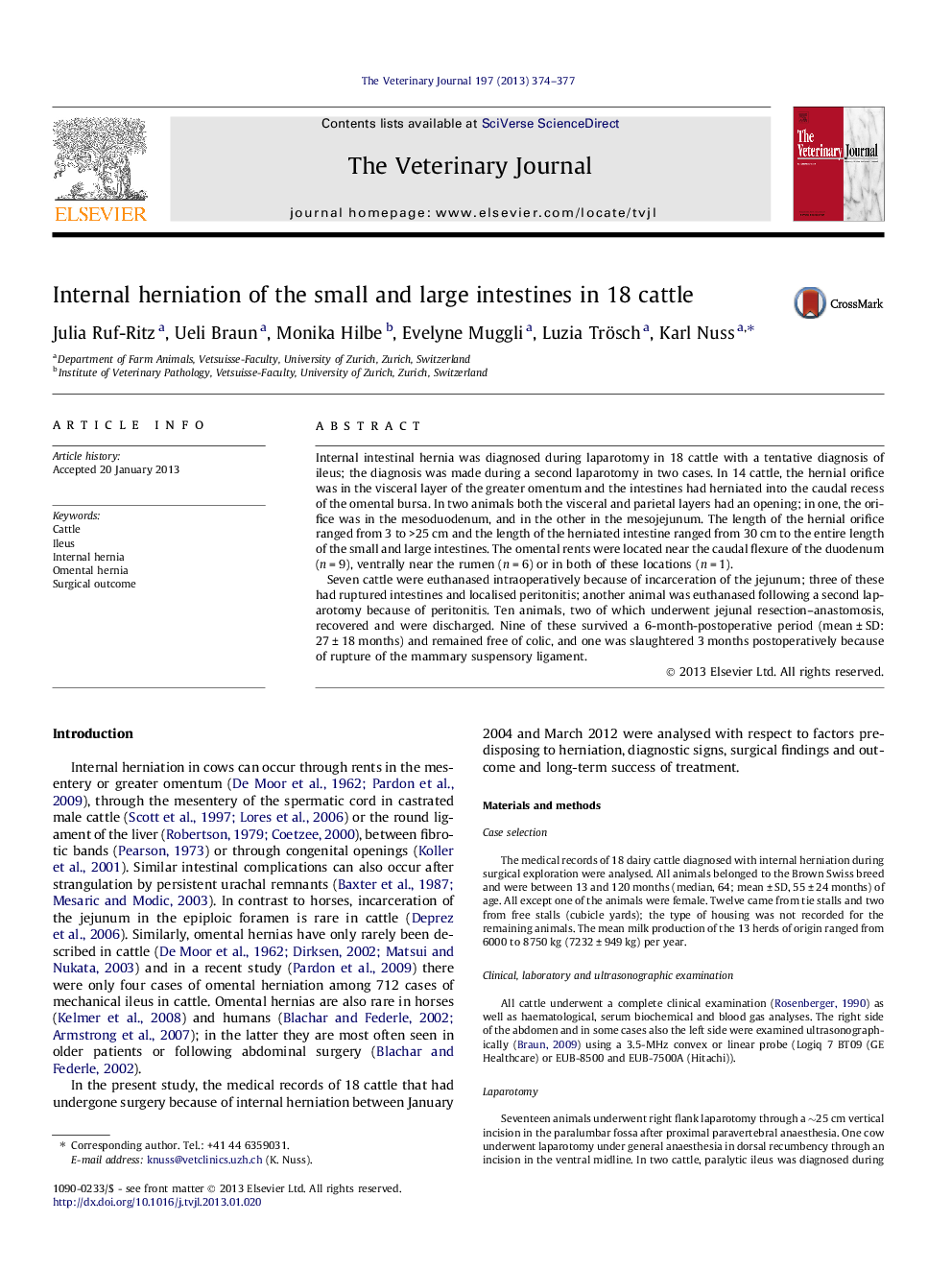| Article ID | Journal | Published Year | Pages | File Type |
|---|---|---|---|---|
| 5798274 | The Veterinary Journal | 2013 | 4 Pages |
Internal intestinal hernia was diagnosed during laparotomy in 18 cattle with a tentative diagnosis of ileus; the diagnosis was made during a second laparotomy in two cases. In 14 cattle, the hernial orifice was in the visceral layer of the greater omentum and the intestines had herniated into the caudal recess of the omental bursa. In two animals both the visceral and parietal layers had an opening; in one, the orifice was in the mesoduodenum, and in the other in the mesojejunum. The length of the hernial orifice ranged from 3 to >25 cm and the length of the herniated intestine ranged from 30 cm to the entire length of the small and large intestines. The omental rents were located near the caudal flexure of the duodenum (n = 9), ventrally near the rumen (n = 6) or in both of these locations (n = 1).Seven cattle were euthanased intraoperatively because of incarceration of the jejunum; three of these had ruptured intestines and localised peritonitis; another animal was euthanased following a second laparotomy because of peritonitis. Ten animals, two of which underwent jejunal resection-anastomosis, recovered and were discharged. Nine of these survived a 6-month-postoperative period (mean ± SD: 27 ± 18 months) and remained free of colic, and one was slaughtered 3 months postoperatively because of rupture of the mammary suspensory ligament.
